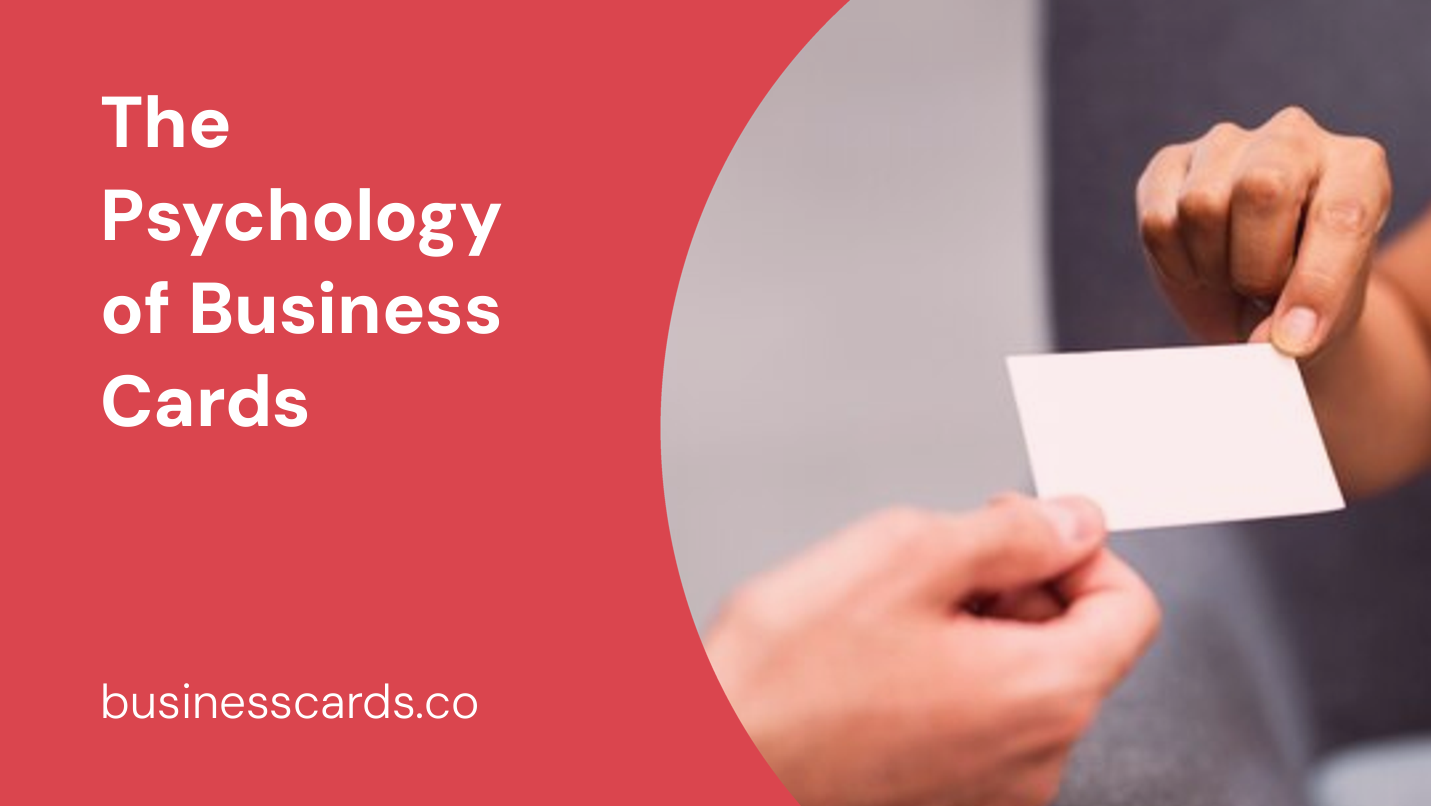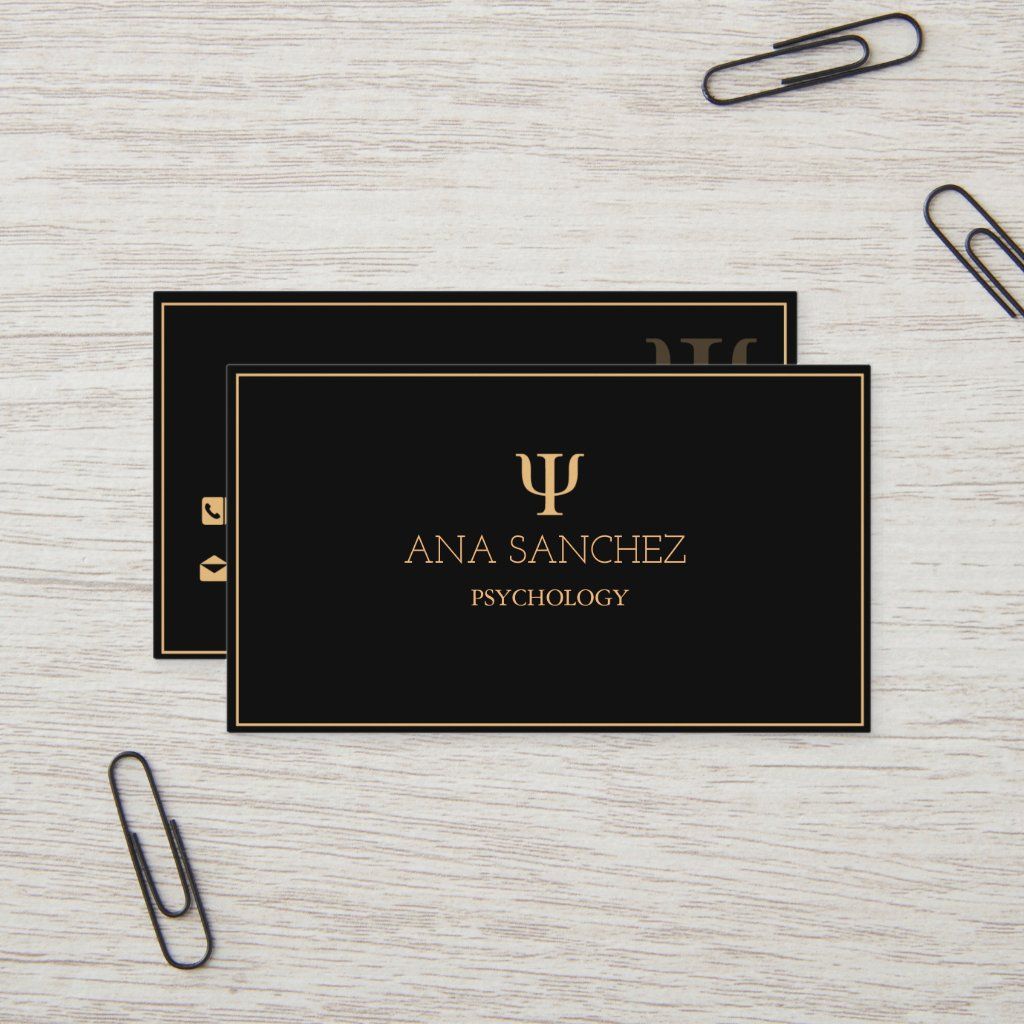
When it comes to making a lasting impression in the business world, the psychology behind business cards cannot be underestimated. These small, handheld pieces of paper may seem insignificant, but they can convey powerful messages about your professionalism, attention to detail, and even your personality. In this article, we will explore the psychology of business cards and how you can utilize this knowledge to make a strong impact in your professional interactions.
The Importance of First Impressions

First impressions are crucial in any business setting, and your business card often serves as your first point of contact with potential clients or collaborators. Researchers have found that it takes just a fraction of a second for someone to form an impression of you based on your appearance alone. This means that your business card has a significant role in shaping how others perceive you and your brand.
The Power of Design
The design elements of your business card can communicate various messages and elicit different emotional responses from recipients. The color palette you choose can convey a range of emotions, such as trust (blue), energy (yellow), or sophistication (black). The font you use can also evoke different feelings – a clean and modern font may give an impression of professionalism, while a handwritten font can add a personal touch.
Visual Hierarchy and Information Hierarchy
The visual hierarchy of your business card is another important factor to consider. Studies have shown that people tend to focus on the upper-left corner of a document or card. Therefore, placing your most important information, such as your name or logo, in this area increases the chances of it being noticed.
Similarly, information hierarchy is crucial in ensuring that the essential details on your business card are accessible and easily understood. Consider the order in which you present information, placing the most important details first. This helps recipients quickly grasp who you are and how to get in touch with you.
Personal Branding and Emotional Connection

In addition to creating a positive first impression, your business card plays a vital role in personal branding. It serves as a tangible representation of your brand and reflects your unique identity in the business world. To establish an emotional connection with your recipients, you should strive to align the design and tone of your card with your brand values and personality.
The Power of Colors and Symbols
Certain colors and symbols are known to evoke specific emotions or convey particular meanings, and incorporating them on your business card can enhance its impact. For example, the color green is associated with growth, trust, and balance, while the symbol of a handshake conveys trust and collaboration. By leveraging these associations, you can create a subconscious connection with your recipients that aligns with the image you want to present.
The Impact of Texture and Material
The tactile experience of your business card can also have a psychological impact on recipients. Choosing a unique texture or material, such as a thick cardstock or a soft-touch coating, can make your card stand out and elicit positive feelings upon touch. This can create a lasting impression and make your card more memorable compared to flimsy, generic options.
The Power of Simplicity
In a world filled with constant stimulation and information overload, simplicity has become a powerful tool for standing out. When it comes to business cards, simplicity can help convey a sense of professionalism, clarity, and focus. Avoid cluttering your card with unnecessary information or excessive design elements that may confuse or distract recipients.
Utilizing White Space
White space, also known as negative space, refers to the empty space around your text and graphics. Incorporating ample white space in your business card design not only enhances readability but also provides a sense of elegance and sophistication. It allows the viewer’s eyes to focus on the essential elements and ensures that your message is delivered clearly.
Less is More
Remember that less is more when it comes to business cards. While it may be tempting to include every contact detail and social media handle, it is best to stick to the essentials. Include your name, position, company name, work phone number, and email address. You may also consider adding your professional website or a QR code that links to your digital portfolio.
The Role of Memory and Connection

A well-crafted business card can have a significant impact on memory and foster a connection between you and the recipient. By considering the psychology behind how our brains process information and form memories, you can design a business card that is more likely to be remembered and associated with you and your brand.
Unconventional Shapes and Sizes
The traditional rectangular shape of business cards can be predictable and easily forgotten. To stand out, consider unconventional shapes and sizes that are still practical for keeping in a wallet or cardholder. A circular card or a die-cut shape that relates to your industry can make a lasting impression and increase the chances of being memorized.
Adding Personal Touches
Incorporating personal touches on your business card can create a unique connection with recipients. This can be achieved by including a handwritten note, a personalized message, or even a small hand-drawn illustration. These personal touches demonstrate your attention to detail and make it more likely for the recipient to remember you and your card.
Conclusion

In the fast-paced world of business, making a memorable first impression is vital. The psychology of business cards offers valuable insights on how to make your card stand out, communicate your brand effectively, and create lasting connections. By considering the power of design, personal branding, simplicity, memory, and connection, you can design a business card that makes an impact and leaves a lasting positive impression. So go ahead, let your business card speak for you and showcase the psychology of your profession.
Olivia Reynolds, a marketing maven, is passionate about the impact of graphic design on brand success. Her love for outdoor adventures and travel fuels her fresh perspective on the importance of visual aesthetics in business cards and branding.